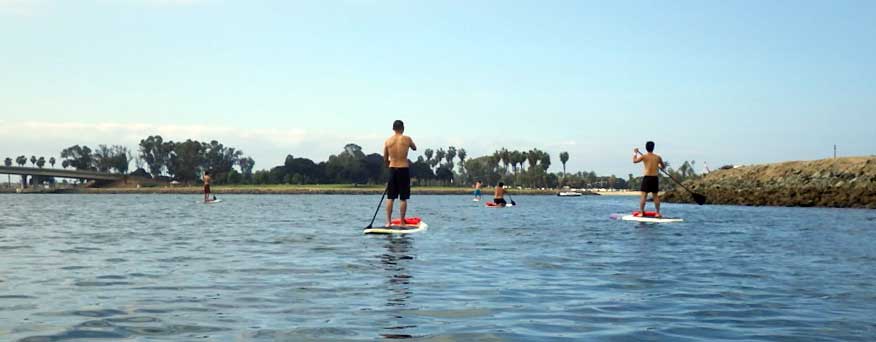-by Jay Murdock, SDKC Safety Editor

In the 2013 Coast Guard Recreational Boating Statistics there is some information that should make every paddler sit up and take notice: In that year there were 560 boating accident deaths, in which 77% of those victims drowned. Of those drowning victims with reported life jacket usage, 84% were not wearing life jackets. All Kayaks, Canoes, and Stand Up Paddleboards are considered “vessels” by the Coast Guard, and are subject to certain safety regulations.
While alcohol use is the leading contributor of boating accidents, the “takeaway” from this data is still important for the paddler: wearing a life jacket is the most important thing one can do to enhance survivability when an accident occurs. Having the life vest tied to your boat behind you is never a wise thing to do, and is akin to having your seat belt “ready to put on when you need it”. An accident is just that, hardly ever anticipated, and often renders you incapable of doing what it takes to save your own life. A life jacket on you will help take care of you when you can’t.
A life jacket is a required safety equipment item on any canoe or kayak of any length. While it is not a requirement to wear one, we make it mandatory to have one on when we do a club or hosted paddle for safety reasons. But one should weigh the consequences of not wearing something that can save your life when something goes wrong. So here are a few things to consider:
- Buy a life jacket that fits you, for your size and body weight.
- Make sure it can be seen by others when you are in the water. Orange, yellow, and lime green are the most visible colors that can be spotted from the air or other boats.
- Secure it snugly to your body. Zip it up fully, and cinch down the straps. A loose jacket can slip off you, over your head if too loose, especially if you are unconscious.
- Never take it off if you are too hot. Far better to slow down in order to not over-heat than risk not having it on. If you must take off your paddling jacket or shirt, raft up with someone and have them hold on to your boat while you make the wardrobe change.
- Make a habit of inspecting the life jacket for signs of excessive wear. Look at the stitching and webbing to make sure they are dependable. Sun-damaged material will eventually fail, so keep an eye on that factor. Each life jacket must be in “serviceable condition”, without rips or tears, and you can be cited for wearing a jacket in that deteriorating stage.
SOT’s and SUP’s
On so many occasions Sit On Top and Stand Up Paddlers have been observed in the bay and open ocean not wearing life jackets. Both SOT’s and SUP’s are now required by the Coast Guard to carry life jackets. While the Coast Guard states that SUP’s are exempt if operated in a “swimming, surfing, or bathing area”, that only applies locally to surfing areas on our beaches. Both SUP’s and SOT’S do not have to carry life jackets while in the designated surfing areas. But if you are 200 yards beyond the surfing area beach, then you need one on board. On Mission Bay, no kayak or SUP is allowed in the designated swimming areas, and all other areas on Mission Bay are considered “Boating Areas”, where life jackets are mandatory. This also applies to our “Big Bay”.
Many SOT AND SUP paddlers consider their craft to be “one big life jacket” and often feel “safe” in not wearing, or even having life jackets on board. You can be cited if you are paddling outside the surfing area without a life jacket. And, you are not “safe” while not wearing a life jacket. The #1 cause of SUP accidents is falling off the board. If you have an accident, hit your head, and go unconscious, you will sink fast in the water without a lifejacket on. It is irresponsible to assume others will save you, and put their lives at risk because you did not take prudent precautions for your own safety. Be safe and wear your life jacket at all times.
– Article updated on 7/6/2015
– Sources: US Coast Guard, San Diego Sector, 2013 Coast Guard Recreational Boating Statistics, Regulation opinion 46 U.S.C.&2101, and the San Diego City Life Guard Services, Mission Bay Headquarters.
– contributed by Jay Murdock
